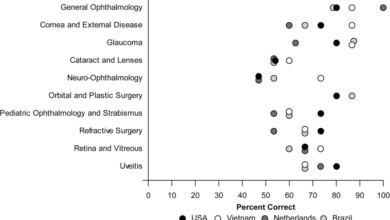Three State Leaders Offer AI Governance Strategies

Governance of artificial intelligence (AI) is emerging as a critical focal point in Georgia, Maryland and Vermont, and during a GOVChats event Tuesday their AI and data leaders reached a consensus on approach.
AI, they said, brings transformative potential for enhancing service delivery, citizen experience, and workforce upskilling within state government.
Nishant Shah, Maryland’s senior adviser for responsible AI, and Josiah Reich, chief AI and data officer for Vermont, joined Nikhil Deshpande, panel moderato and Georgia’s chief digital and AI officer, for the conversation. Work on AI, Deshpande said, is underway in earnest in his state.
“We know that AI needs no introduction because, in state government, IT shops across the country are working to expand their AI understanding,” Deshpande said. “While we still do not have an executive order focused on AI for the state, the Georgia Technology Authority (GTA) has implemented an AI governance framework in partnership with state agencies. We are currently putting together an innovation lab for technology pilots and proof of concepts.”
Vermont and Maryland were among the first states to hire staff to manage state AI and data integration — and in the former state, Reich said the environment was developing when he joined.
“It was a crazy time during the middle of 2022 when I took the role,” he said. “Our Legislature had just put together the law that created a division of artificial intelligence, establishing an AI Council with a director. Other positions surrounding the technology were not specified at that time.”
Reich had been a developer at the state for more than five years and had helped the Agency of Transportation build some of its first in-house AI projects.
“After I was hired and we finished the second draft of the Vermont AI Code of Ethics, ChatGPT landed, and suddenly, people meant something different when they were talking about AI from what they meant three or four weeks prior,” he said, describing the shift from machine learning AI to generative AI and large language models as being dramatic.
Maryland, Shah said, has taken a multifaceted approach to AI, releasing regulatory orders on it during the last few months. Gov. Wes Moore unveiled a four-pronged strategy in January that incorporated an AI executive order, accessibility policy, the implementation of new digital design tools, and partnerships to expand the protections of the state’s digital infrastructure.
“The whole concept there was to cohere an AI strategy for the state that’s responsible, ethical, and works in deep collaboration with legislators, agency leaders, the business community, academia, and other key stakeholders here,” Shah explained. The goal of Moore’s AI orders, he said, was not just to mandate a set of principles for state agencies for regulatory purposes.
“The AI policy also prompted a bunch of organizational work to ensure that the state is set up for success, including kicking off several pilots focused on governance, to operationalize that set of principles and then get education and training in place for state employees,” Shah said. “The last thing the plan called for — which is maybe a little bit different from other states — is a set of, what we’re calling horizon scanning exercises in our workforce, economic development, and security sectors.”
According to Shah, this involves analyzing the velocity of how AI will impact Maryland’s industrial base, given its port infrastructure and where a lot of the state’s jobs are centered today.
Shah and Reich both stressed the crucial importance of data governance in AI. Their answers varied from Deshpande on what methods each state has taken to classify and define data.
Reich said that while it is still very early days for data classification strategy implementation in Vermont, a decisive data classification approach is something that has been front of mind for state leaders for a long time.
“I recently sent out a five-level data classification plan draft to our security department,” he said. “Our goal for this first pass at data classification is to specify which data should not be accessible without a court order and tagging it with relevant privacy restrictions.”
By comparison, Shah emphasized Maryland’s goal of establishing a repository of use cases that expand over time, and the importance of successful proof of concepts involving the correlation between AI and data across key functional areas, such as translation, permitting, workflow automation, and natural language data analysis.
“One integral part of this is deciding on the initial proofs of concept,” he said. “So, we created a sub-cabinet with representatives at the secretary level from across various state agencies and started with an initial set of one-pagers.”
These one-pagers, according to Shah, categorized proof of concept ideas into “key buckets” identified by Shah’s department as relatively low-risk endeavors, yet holding significant potential for learning and development.
Moving forward, both leaders said finding the most knowledgeable and experienced people to work cohesively across their respective state agencies will be the difference between successful implementation of AI and failure.
A large part of Maryland’s strategy, said Shah, is working together to find state agency staffers with just as much passion and excitement about AI as Meta’s teams of machine learning engineers and research scientists — because, in time, those individuals will be the ones to move the needle of progress forward.



